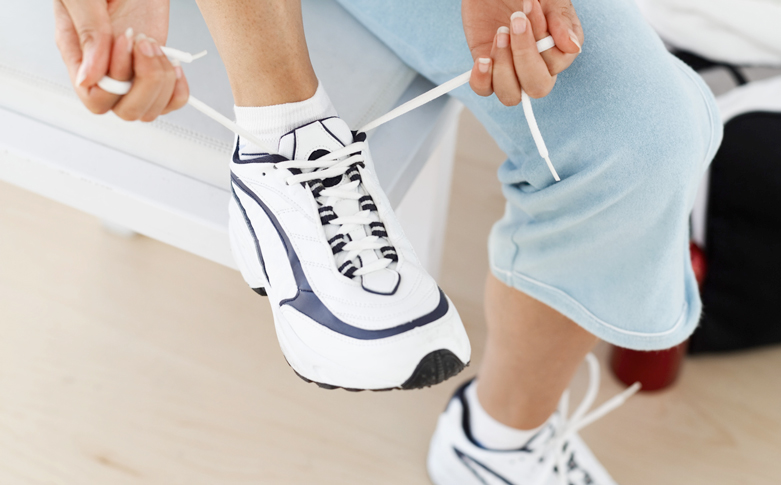As a nurse, you might have the impression that you can wear any shoe as there are no shoe restrictions in your workplace, but this isn’t the case.
You spend most of your time on your feet, performing rounds, documenting, delivering medication, and providing care.
Studies show that nurses walk approximately 5-6 miles per 12-hour shift.
Due to this, you can’t wear just any shoe you come across. For example, you can’t wear your dance shoes for latin ballroom dancing to your work shift.
To be on the safe side, you should take your time and find the ideal shoes for your profession.
Remember that wearing the wrong shoes can lead to plenty of problems. The direct repercussions can occur in hours, but they can take months to treat.
Blisters, corns, athletes’ foot, hammertoes, nail fungus, ankle soreness, and other symptoms are frequent in the short term.
These disorders or discomforts are your skin’s response to continual friction and constriction.
If you routinely wear the wrong shoes, you may be causing more harm to your health than you think.
Constant pressure on the joints might cause arthritis. Furthermore, if your shoes lack proper cushioning or other shock-absorbing devices, your body must compensate for this.
If you experience knee pain, it is most likely due to your knees functioning as shock absorbers rather than your shoes.
The shoes you wear support not just your feet but also your back. This means bad footwear can lead to back ailments, nerve damage, joint pain, and arthritis in the long run.
Choosing the right shoes for nurses
When looking for a shoe that will provide the most comfort and support, consider these factors to help you and your feet get through the day in the best possible condition.
Fit
Your shoe should fit snugly but not too tight or too loose. Excess space in the toe or heel might lead to slipping, while pinching in the heel or toe can cause friction and blisters.
When you buy shoes from a physical store, always put them on and walk around the store to confirm that they are comfortable for you.
If buying them from an online store, be ultra-cautious and ensure that you order the correct size. The last thing you want is the back and forth of returning the shoes.
Shock absorption
The sole is the heart of the shoe. If the sole isn’t supportive and functional, your feet will not last a 12-hour shift.
To be safe, go for a shoe with a thick sole and cushioning that will absorb shock and assist in relieving knee, ankle, and hip pain.
As you choose the sole, remember that you want one that will allow you to make fast spins and motions. For this, you should go for shoes with rubberized soles and great tread patterns.
If you have toe arthritis or arthritis pain on the top of your foot, you will benefit from a stiffer sole that does not twist. Look for a firmer sole that offers excellent traction and durability.
Wide toe box
Make sure the toe box is broad enough so that it does not press against the toes. This is especially important if you suffer from bunions and hammertoe.
Arch support
If you have flat feet or other ailments, such as plantar fasciitis, you should wear shoes with arch support or a padded instep.
The amount of arch support you need varies based on the height of your arches. If you use an insert, find one that fits the shape of your foot.
Ease of cleaning
You never know what you’re going to walk into. It might be spilt bedside water, vomit, or other bodily fluids.
Due to the risks involved, you need shoes that you can easily wipe down and go on with your shift.
Replacing worn out nursing shoes
Besides buying the best shoes, you must do plenty of other things to ensure you have a great time with your shoes. One of the things is to replace your shoes when they wear out.
The American Academy of Podiatric Sports Medicine recommends replacing your shoes every 350 to 500 kilometers.
As mentioned above, nurses walk an average of 5-6 miles per shift, so after six months, you’ll have walked at least 350 kilometers.
This means you should replace your work shoes twice a year, or every six months, to prevent foot problems. Replacing your shoes regularly guarantees that you always have a pair that will provide you with the quality support your feet require.
You should replace your work shoes regularly because it comes with plenty of benefits that include:
- Avoid foot pain.
- Prevent nurses’ back aches.
- Feel more comfortable walking from one place to the other
- Keep the heel supported.
- Work more efficiently during your shift.
When should you replace your nursing shoe?
It can be challenging to determine when to change your nursing shoes. In fact, many nurses wait until their shoes are entirely worn out before replacing them. This is wrong.
Aside from the six-month rule, several indicators can help you know when it’s time for a new pair. These signs include:
Discomfort: If you have foot or back pain while wearing your nursing shoes, it’s time to replace them.
Loss of grip: You should turn your shoes over to see if the outsoles are worn down. If so, they’re probably not providing enough shock support, and it’s only a matter of time before they start hurting. The lower traction may also make you more likely to slip.
Visible signs of wear and tear: Look for rips, tears, and cracks in your shoe’s heel or inner layer. If your insoles are worn down, they are less likely to protect you from various foot-related problems, which can slow you down and cause substantial pain in your feet and surrounding muscles.
Parting shot
If you have been wondering whether you can wear any type of shoe as a nurse, unfortunately, you can’t. You need to find one that is right for your work. As mentioned above, take your time to find the ideal shoe and replace it when it’s time.




